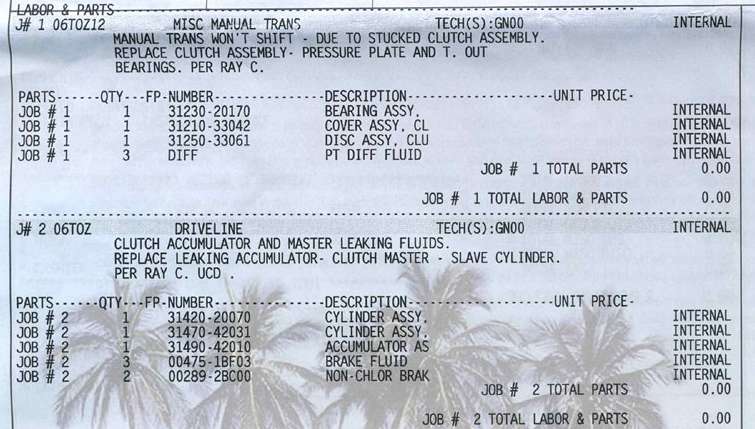It's telling that the service writer didn't respond to the question about the dual mass flywheel. He probably didn't know what you were talking about. They have only been in BMWs for a little over a quarter century.
After all, it's not his job to know these details. Just to add up the book time for every service, skipping nothing, even if a part is already off for some other service.
As you know, changing the rear main seal is pretty easy when the clutch is changed. On most BMW engine the seal is held by a separate cast aluminum carrier plate. For some engines, BMW encourages its dealers to use a kit with the seal already pressed into a new plate, and a disposable plastic guide cone/cap held in the new seal. So it's just removing six bolts, tapping loose the old plate, putting sealing compound on the oil pan interface and installing the new gasket (resin side out) and bolting the plate kit on.
A note about the sealing surfaces: the carrier plate seals against both the vertical engine block and horizontal oil pan gasket. Real BMW gaskets are often resin coated on one side, and should be installed without additional sealants. The old carrier gasket should come off cleanly with the plate, while the oil pan gasket should remain intact on the oil pan. Re-sealing against the old oil pan gasket is done with a thin layer of non-adhesive compound. If things go badly (usually because the previous service used gasket compound) the oil pan gasket can tear, creating a leak that looks like the new seal has failed.
After all, it's not his job to know these details. Just to add up the book time for every service, skipping nothing, even if a part is already off for some other service.
As you know, changing the rear main seal is pretty easy when the clutch is changed. On most BMW engine the seal is held by a separate cast aluminum carrier plate. For some engines, BMW encourages its dealers to use a kit with the seal already pressed into a new plate, and a disposable plastic guide cone/cap held in the new seal. So it's just removing six bolts, tapping loose the old plate, putting sealing compound on the oil pan interface and installing the new gasket (resin side out) and bolting the plate kit on.
A note about the sealing surfaces: the carrier plate seals against both the vertical engine block and horizontal oil pan gasket. Real BMW gaskets are often resin coated on one side, and should be installed without additional sealants. The old carrier gasket should come off cleanly with the plate, while the oil pan gasket should remain intact on the oil pan. Re-sealing against the old oil pan gasket is done with a thin layer of non-adhesive compound. If things go badly (usually because the previous service used gasket compound) the oil pan gasket can tear, creating a leak that looks like the new seal has failed.


